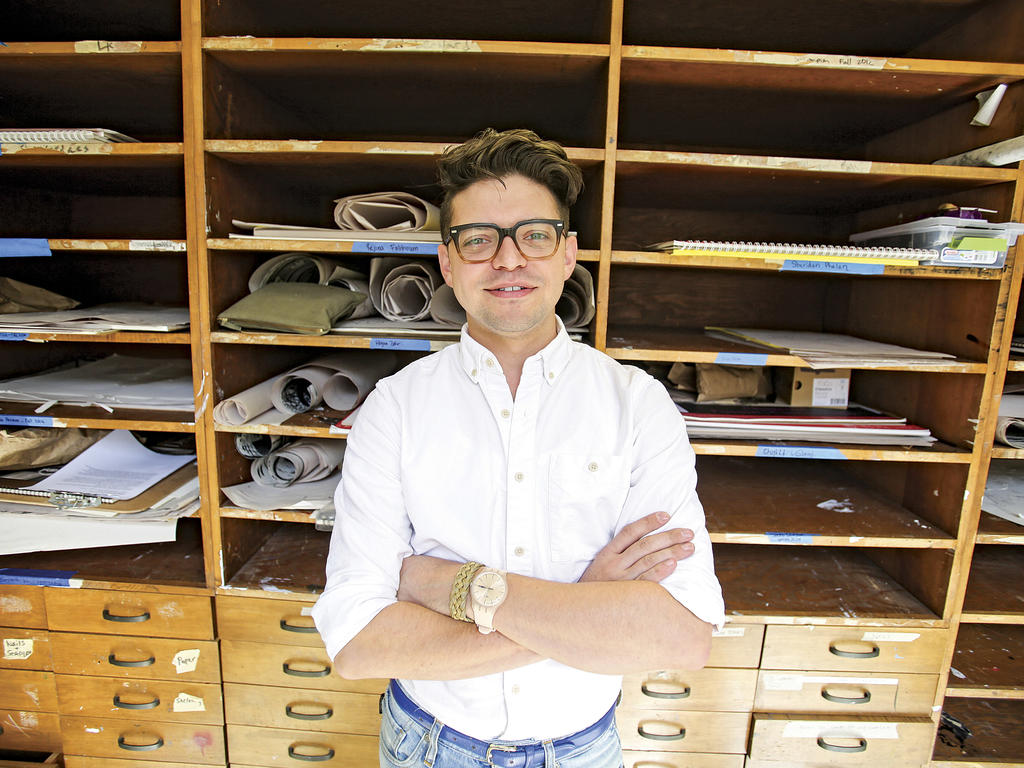By Joel Parsons ’07
“I promise you, folks can make a lot more potentially with skilled manufacturing or the trades than they might with an art history degree." --President Barack Obama
Charged with interrogating this quote from the president, I Google “Obama art history.” I click on the first result, a video from CNN, in which the quote is introduced by a gray-haired man in a dark and serious suit, standing in front of a bank of monitors in a digitally created nonspace. The camera cuts from this man to President Obama, who stands in shirtsleeves, his tie slightly loosened. His undershirt is visible through his buttondown under the intense light from what I assume is the work-day sun.
Behind him is a crowd of men and women in more casual clothing, some wearing sweatshirts that have the name of a union printed across them. Their presence creates a spectrum of skin tones. Each person was clearly vetted for visual effect, as were the president’s and the newscaster’s costumes, the size of their flag lapel pins, the shape of the microphones they speak into, and the angle of the light on their faces. The president makes the comment in question, immediately declares his love for art history, and says that he doesn’t want to get a bunch of angry emails from art historians. The crowd behind him laughs and the clip cuts off abruptly.
A click away, I find a digitized copy of a handwritten note from President Obama, apologizing to an angry art history professor who emailed him to complain about his comments. The card on which the note is written is plain, undecorated save for two lines of text printed in a conservative, serif font in a shade of blue that is just on the vibrant side of navy: THE WHITE HOUSE, and under it in smaller letters, WASHINGTON. Its tasteful, minimal aesthetic pulls double duty, meant to convey both populist efficiency (note the absence of gold gilding) and stern superiority (you know where Washington is, right?). It sets up a productive contrast with the friendliness of the president’s own handwriting, particularly his looping signature, soft on the outside with a strong slash through the middle.
Like the video of the president’s speech, it is a screen-scale tour de force of political imagecraft, certainly produced with the full knowledge that it would be digitized and go viral, at least among a particular demographic. Below this image are more clickable headlines: “Daisy campaign ad that changed politics turns 50;” “Are stolen images of celebrities art?”; “Cell phone images now used in the war on terror;” “Drone images reportedly show. . .” and on and on. There are links to slideshows and videos, which contain within them more videos and are prefaced by commercials for movies or television shows.
Even when presented with a text, my research instincts are grounded in methodologies from art history 101, tools for visual analysis that I have employed frequently since the day I learned them in a first-year art history course here at Rhodes College. With a cursory visual analysis complete, I turn again to the quote, which I can see now as a product of its attendant images as much as a producer of them. Will a skilled manufacturer or tradeswoman make a lot more money than a student of art history? Maybe. It’s possible. Who can know for sure? The answer is far less interesting and vital than the follow-up questions that close-looking can produce. At whom is this message of economic self-sufficiency via vocational training being directed? What image of America is painted by this message and the setting in which it is delivered, and who has access to that America? (Another relevant question might be, does a person who becomes an arts professional for the money harbor a greater misunderstanding of art or money? But that’s a question for another conversation.)
Stepping outside of this exercise and these questions, what we can say, for certain, is that our culture creates and deploys images at an increasing, and increasingly overwhelming, rate. Paychecks aside, more and more we are finding that images are a kind of currency. And there is no field of study that better equips its students to process, unpack, dissect, navigate, analyze, deflate, create, and otherwise make sense and use of images than the study of visual art. As the onslaught of images grows, a skilled manufacturer, an academic, and a president will find that an eye honed in art history seminars and painting studios will serve her better every day.
In his apology note, President Obama said that art history, which we may understand as the fruit of this process of close-looking and analysis, has helped him in his own life to “take in a great deal of joy.” Replace joy with richness, understood in its broadest sense, and you’ll find a sentiment with which a great many artists, skilled manufacturers, art historians, and tradeswomen can agree.
